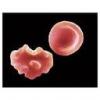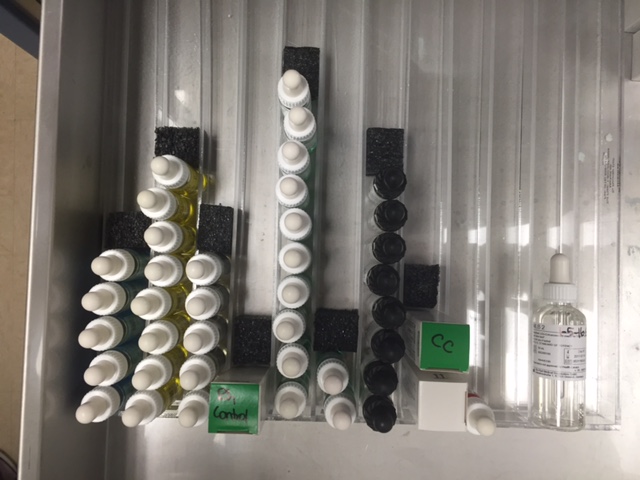Leaderboard
-
in all areas
- All areas
- Records
- Record Comments
- Record Reviews
- Jobs
- Jobs Comments
- Jobs Reviews
- Questions
- Question Comments
- Question Reviews
- Links
- Links Comments
- Files
- File Comments
- File Reviews
- Images
- Image Comments
- Albums
- Album Comments
- Records
- Record Comments
- Events
- Event Comments
- Blog Entries
- Blog Comments
- Topics
- Posts
- Status Updates
- Status Replies
-
Custom Date
-
All time
June 28 2007 - April 26 2024
-
Year
April 26 2023 - April 26 2024
-
Month
March 26 2024 - April 26 2024
-
Week
April 19 2024 - April 26 2024
-
Today
April 26 2024
-
Custom Date
01/29/2016 - 01/29/2016
-
All time
Popular Content
Showing content with the highest reputation on 01/29/2016 in all areas
-

Routine testing of cord blood at delivery
Malcolm Needs and one other reacted to David Saikin for a topic
We do cord w/u on group O and Rh Neg mother's. Also, if a baby's bili starts to rise they might order a w/u from a mother that doesn't fit the paradigm. I've seen a +DAT due to private ag from the father. Made a good paper (mid-1980s). Transfusion Volume 24, Issue 1, pages 19–21, January-February 19842 points -
Our rules regardless of methodology: K, rule out heterozygous C, E, rule out heterozygous ONLY when Anti-D is also present. If no Anti-D, rule out homozygous2 points
-
That's what we do. Cord bloods on O and Rh negative mothers. Or if the mother has and antibody. We don't even do elutions here. Just report the Mom is O and the baby is A with a positive DAT ..for example.1 point
-

Routine testing of cord blood at delivery
tricore reacted to Malcolm Needs for a topic
I must admit, from the point of view of a UK member of this wonderful site (so NOT governed by AABB recommendations) a DAT on each and every cord blood is complete overkill.1 point -
This is what we do, too! I was going to take a pic and post it, but you beat me too it!!! (can't take credit - the genius before me thought of it)1 point
-

another "rule out" rule question: Solid Phase
StevenB reacted to David Saikin for a topic
I know places that use either of those policies. I will r/o Rh's with a heterozygous cell if using enhancement - enzyme, PeG. I consider the new technologies to be enhancements because of their increased sensitivities but I know folks that don't accept that. I think it is whatever makes your Medical Director comfortable.1 point -
Reagent fridge holder
amym1586 reacted to Teristella for a topic
Yes, we use strips of foam sheeting that comes between the sleeves of glass tubes we get. It's about a quarter inch thick so I cut it in 1x3 strips or so and fold/roll them. After a while they loose their springy-ness so having it rolled helps. I like the thicker foam blocks better, but I haven't see anything in our lab packed with that stuff.1 point -
From the manufacturer's insert: "The results obtained in this application should be interpreted with particular caution, as there is clear evidence that the reactivity of red blood cell surface antigens may be impaired by chloroquine treatment, which could lead to a negative reaction with a weakly reactive antibody other than one of "anti-Bg" specificity." Paraphrasing Issitt and Anstee (Applied Blood Group Serology, 4th Ed), Bg antigens can appear, or disappear over time. So a donor who had previously typed Bg- by a manufacturer, may later have the antigen, but appear on the panel as Bg- (or HLA- as they do now). The opposite may very well happen too: a cell marked Bg+ may very well be Bg- in the future. My only advice is, if you decide to use this reagent, you must be sure that you have performed an adequate rule-out of all other antibody possibilities as required by the FDA. With the exception of the K antigen (as not all panels have K+k- cells), I'd make sure that I had homozygous crossouts for all of the other required antigens prior to resorting to chloroquine diphosphate treatment. I'm not disagreeing with Malcolm, only cautioning that there is an appropriate time to utilize chloroquine.1 point
-

Prophylaxis anti D in partial D women
Yanxia reacted to heathervaught for a topic
I am by no means an expert on the topic, but I think that since Rhogam is human-derived and therefore polyspecific, it seems as though there is a possibility that the product contains antibodies to multiple D epitopes and would therefore be able to bind to whatever antigen is present on the fetal RBCs that Mom lacks. Im not familiar with all of the brands of RhIg though, I don't know if that is true for the others.1 point -

Sickle Cell Transfusion Patients
Yanxia reacted to Malcolm Needs for a topic
In the UK, we normally give Rh and K matched, as recommended in the BCSH Guidelines. If the patient is Fy(a-b-), we do not match, as most of them carry the FYB gene, but are homozygous for the GATA-1 gene, which prevents the Fyb antigen being expressed on the red cells. Such individuals do not make anti-Fy3, as a rule. Of course, if they turn out to be a true Fy(a-b-), and they make an anti-Fy3, we give Fy(a-b-) blood. Similarly, quite a few S- s- individuals are U+, and so we don't give S-, s-, U- blood unless the patient makes an anti-U.1 point -

Reagent fridge holder
John C. Staley reacted to tbostock for a topic
1 point -
As I said previously - the simple thing is to put up the reverse group at 37°C. I am sure the normal antibody screen was also negative. If you like you can also put up your antibody screen at room temperature. However - whether this is an anti-A1 or an anti-M, it is not clinically significant and there will be no problems for your pregnant mum. And in my experience A2 samples (if you call A2 an 'A variant') almost ALWAYS gives a 4+ reaction1 point
-
hi Rashmi, I think the answer to your question is.....sort of.....I'm thinking possibly both.....Here is the scenario...... in March/April, I noticed several patients that were presenting as DAT negative, probable warm auto antibodies when run on the ECHO, but if I had them repeated in tube, (both PEG and LISS, and also did complete tube DAT), all was negative. After much back and forth with Immucor Tech support, who were quite insistent that nothing was wrong with the assays, I finally got them to dispatch service because we started to get random errors during testing which indicated the system was not delivering or detecting reagents/specimens that had plenty of volume for processing. After 2 days of going over things, the ONLY concerning finding was that during one of the test cycles of priming the fluidics, PBS was dropped onto the plate deck where the stripholders are lined up for pipetting. This was with both the current and a brand new probe. After long thought out consideration by field service, several parts were ordered. One was a tiny board that controls the probe pipetting mechanism. This stopped the errors we were receiving regarding the level sense....... Now, why do I think this is relevant? Since this part was replaced, I have not seen any more of these solid-phase related DAT negative, all screen/panel cells positive cases, that were negative in tube (PEG and Liss.....)....thus removing cross contamination and this type of false positive ID's......What do you think? Linda1 point



